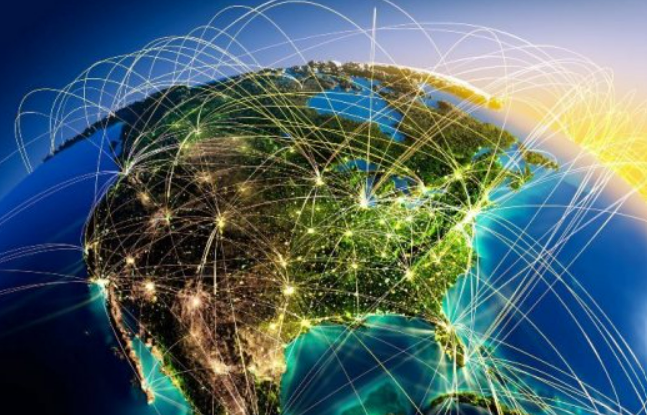💡 Introduction
Table of Contents
In today’s connected world, every country depends on others through trade, technology, and information. The clothes you wear, the mobile you use, or even the snacks you eat might come from different nations. This connection among countries is called globalisation.
In this article by StudySeed.net, we’ll understand what globalisation means, its main features, examples, and impact on India’s economy — all explained in simple and easy language for Class 10 students.
🌐 Meaning of Globalisation
Globalisation means the increasing link and cooperation among the world’s countries through trade, investment, ideas, and technology.
✅ Simple Definition:
Globalisation is the process through which countries become connected by trade, investment, communication, and movement of people.
It turns the entire world into a single global marketplace where goods, services, and ideas move freely.
📦 Everyday Examples of Globalisation
- Mobile phones are designed in the USA, assembled in China, and sold in India.
- Clothes and shoes are produced in one country and sold in another.
- Food chains like KFC and Domino’s serve people across different countries with local menus.
These examples show how globalisation links economies and cultures.
At StudySeed.net, such real-life examples are included in every chapter note to make learning easier and more practical.
🔑 Main Features of Globalisation
- International Trade: Buying and selling goods between countries.
- Foreign Investment: Companies invest and build factories in different nations.
- Technology Transfer: Modern techniques and software spread globally.
- Movement of People: People travel across borders for jobs and education.
- Cultural Exchange: Movies, music, and food cross national boundaries.
🏢 Role of MNCs in Globalisation
Multinational Companies (MNCs) are large firms that operate in multiple countries.
They play a vital role in speeding up globalisation by spreading products, technology, and ideas.
📘 Example:
A company like Nike may design shoes in the USA, get them manufactured in Vietnam, and sell them worldwide.
MNCs invest in developing countries like India, creating jobs and bringing modern technology. You can read more examples of MNCs in India on StudySeed.net in the Class 10 Economics notes section.
⚙️ Factors That Helped Globalisation
- Improved Transportation: Ships, trains, and planes move goods faster.
- Technological Advancements: The internet and smartphones connect people globally.
- Liberalisation of Trade: Governments reduced import taxes and barriers.
- Growth of MNCs: Companies expand across borders, connecting world economies.
🇮🇳 Globalisation and the Indian Economy
In India, globalisation gained importance after 1991, when the government launched the LPG (Liberalisation, Privatisation, and Globalisation) reforms.
✅ Positive Impacts
- More job opportunities in IT, services, and manufacturing.
- Better and cheaper products for consumers.
- Improved technology and modern production methods.
- Indian companies like Infosys, Tata, and Wipro became global players.
⚠️ Negative Impacts
- Local industries face strong competition from foreign brands.
- Job insecurity in private sectors due to contract work.
- Unequal benefits: Urban areas gain more than rural regions.
- Cultural influence: Western culture is spreading rapidly among youth.
🧩 Examples of Globalisation in India
- Automobile Industry: Indian companies collaborate with foreign brands for design and manufacturing.
- Food Industry: Fast food chains adapt global menus for Indian taste.
- IT Services: Indian software engineers work for clients across the world.
- Mobile Industry: Phones are made using parts from multiple countries.
These examples show how globalisation has reshaped India’s economy and lifestyle — topics clearly explained at StudySeed.net for quick exam revision.
🧠 Key NCERT Points for Revision
| Concept | Explanation |
|---|---|
| Meaning | Worldwide link through trade and communication |
| Main Factors | MNCs, technology, liberalisation |
| Start in India | 1991 economic reforms |
| Benefits | Jobs, technology, better goods |
| Challenges | Competition, inequality, job loss |
📚 Why Globalisation Matters
Understanding globalisation helps students see how the world’s economies are interdependent. A decision made in one country can affect many others. Learning this chapter builds awareness about how India fits into the modern global network — a concept explained clearly on StudySeed.net with simple NCERT-based notes.
🏁 Conclusion
In short, globalisation means connecting the world through trade, investment, and communication. It has helped India grow but also brought challenges for local producers and workers.
India needs to ensure that globalisation leads to inclusive and balanced growth for everyone — from cities to villages.
✍️ Final Note
For more Class 10 Economics notes and simplified NCERT explanations, visit StudySeed.net — your trusted source for clear, student-friendly learning material.






Be the first to write a comment.